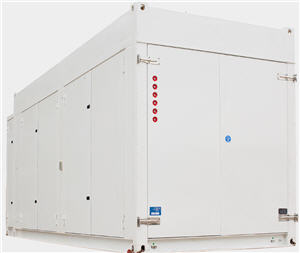HP rolls out 20-foot datacenter pod

Hewlett-Packard on Tuesday unveiled a 20-foot version of its Performance-Optimized Datacenter (POD), a trailer-sized container that packs a datacenter in it.

The POD movement has a bevy of players including IBM, Rackable, Sun, Verari Systems and HP. In addition, some companies are going with so-called Pod architecture, a big hollow building that carries a series of these data center containers linked together. With that architecture, datacenter pods can be swapped out continually to enhance performance of a facility.
Also see: Data center design 101
Jean Brandau, POD product marketing manager for HP's Scalable Computing and Infrastructure group, said the company went with a smaller POD option because the 40-foot containers were hard to transport in areas where roads were dicey.
The 40-foot PODs can weigh as much as 100,000 pounds depending on the IT that's packed in side. That weight means you can't airlift it into place. In industries such as oil and gas and the military these datacenters can be found in places where the roads aren't exactly built out.
"The 40-foot POD limits how you transport," says Brandau. "The 20-foot version, which weighs about 50,000 pounds can be transported in a cargo plane."
For enterprises, the 20-foot version POD may also have some appeal. Some companies don't need all the racks that come inside a 40-foot container. As for the pricing, the 40-foot POD lists for $1.2 million and the 20-foot lists for $600,000 not including the IT deployed inside. Brandau also noted that some companies may choose to lay out a series of 20-foot PODs in various geographies instead of centralizing their data centers in one location.
Among the notable features of HP's 20-foot POD:
- A single utility closet that consolidates operational panels and hot aisle access;
- A smaller footprint that packs 2,000 square feet of data center space into a 20-foot container;
- Improved energy efficiency.